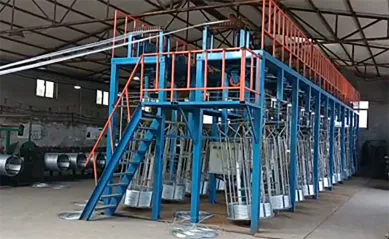Jul . 28, 2024 19:45 Back to list
Essential Guide to Choosing the Right Roofing Cap Nails for Your Roofing Project
The Importance of Roofing Cap Nails in Construction
When it comes to roofing projects, one cannot underestimate the significance of every single component used in the process. Among these components, roofing cap nails play an indispensable role in ensuring the durability and effectiveness of roofing systems. These specialized nails are designed to secure roofing materials, prevent water seepage, and provide structural integrity, which is crucial for the longevity of any roofing project.
Roofing cap nails, typically made of galvanized steel to resist corrosion, are characterized by their large, flat heads, which serve a unique purpose. The flat head of these nails increases the surface area that contacts the roofing material, providing an enhanced grip and minimizing the risk of leaks. This feature is especially important in regions that experience heavy rainfall or snow, where any gap or looseness could lead to significant water damage and costly repairs.
One of the primary uses of roofing cap nails is to anchor roofing felt and underlayment securely to the roof deck. These materials act as moisture barriers and are critical in protecting the underlying structure of the roof from water intrusion. By using cap nails, contractors ensure that these protective layers are firmly held in place, which is vital for the overall effectiveness of the roofing system.
In addition to securing underlayment, roofing cap nails are also commonly used in attaching various types of shingles, including asphalt, wood, and metal options
. When roofing shingles are installed correctly with cap nails, they provide a robust shield against harsh weather conditions. The large heads of these nails prevent the shingles from lifting in high winds, a common issue that can lead to shingle failure.roofing cap nails

Moreover, roofing cap nails come in various lengths and types, allowing builders and contractors to select the most appropriate option for their specific materials and roof slopes. The choice of nail can depend on several factors, such as the thickness of the roofing material, the type of roofing system being installed, and regional building codes. This versatility makes cap nails an essential tool in the arsenal of roofing professionals.
Another benefit of roofing cap nails is their ease of installation. Most cap nails can be driven in with a hammer or a nail gun, allowing for a quick and efficient installation process. This not only accelerates project timelines but also helps reduce labor costs for contractors, making roofing projects more economically viable.
Sustainability is another important aspect to consider in today's construction practices. Many manufacturers are now producing roofing cap nails that are environmentally friendly, utilizing recyclable materials. By opting for such products, builders can contribute to sustainable construction practices while still ensuring the quality and durability of their roofing systems.
In conclusion, roofing cap nails are a small but mighty component of roofing installations. Their unique design and versatility make them pivotal in securing roofing materials and enhancing the overall lifespan and efficiency of roof systems. As the construction industry continues to evolve, the importance of quality components like roofing cap nails cannot be overlooked. They serve as the backbone of effective roofing solutions, protecting homes and businesses from the elements while promoting safety and structural integrity. Whether you are a homeowner considering a roofing project or a contractor looking for optimal materials, recognizing the importance of roofing cap nails will lead to better, more reliable results in any roofing endeavor.
-
Weather Resistance Properties of Quality Roofing Nails
NewsAug.01,2025
-
How Galvanised Iron Mesh Resists Corrosion in Harsh Environments
NewsAug.01,2025
-
Creative Landscaping Uses for PVC Coated Wire Mesh Panels
NewsAug.01,2025
-
Common Wire Nail Dimensions and Their Specific Applications
NewsAug.01,2025
-
Choosing the Right Welded Wire Sheets for Agricultural Fencing
NewsAug.01,2025
-
Anti - Climbing Features of Razor Wire Barriers
NewsAug.01,2025









